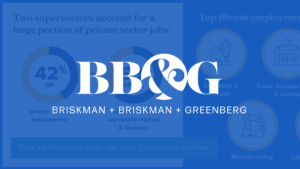
Senate Shuts Down Debate on Student Loan Interest Rate Fix
May 9, 2012
By Kristen Friend, staff writer – May 9, 2012.
Republican Senators blocked debate on Tuesday of a Democratic bill that would have prevented interest rates from doubling on some student loans. Rates on subsidized Stafford loans are set to increase from their current rate of 3.4 percent to 6.8 percent in July. The measure would have kept rates at 3.4 percent for another year. [1]
The procedural vote fell along party lines, 52 to 48, with Republican Olympia Snowe voting present. [2] Democratic Majority Leader Harry Reid also voted against the measure, a move that allows him to bring it to a vote again at a later time. The vote is the 21st filibuster of a Democratic bill during the 112th Congress. [2]
Due to rising education costs, students and their families are increasingly relying on federal loans to finance their education. In 2010, student loan debt for the first time overtook credit card debt in the U.S. And on Tuesday, hours before the Senate blocked consideration of the bill, total student loan debt exceeded the $1 trillion mark. [3]
The rate increase is being packaged as a major political showdown, but it only affects a portion of current students: undergraduates taking out subsidized Stafford loans after July 1. Undergraduates with unsubsidized loans and graduate students already pay a higher rate. Students with existing loans will not see any change.
Subsidized Stafford loans are awarded based on economic need. Most students seeking financial aid must take a combination of subsidized and unsubsidized loans to pay for expenses. According to the Department of Education, the jump in rates would affect about 7 million undergraduates and add about $1,000 to the cost of the loan. [4]
Both parties are trying to woo middle class and youth voters in an election year and rhetoric is again heating up. But for once, Democrats and Republicans actually agree on the ultimate outcome. Neither party wants to shoulder the burden of blame should interest rates jump this summer.
The point of contention is how to pay for another year of lower rates. Senate Democrats want to fund the measure by closing tax loopholes that allow wealthier individuals to avoid paying some Medicare and Social Security payroll taxes. Republicans propose paying for the cut by eliminating a preventative care fund established by President Obama’s health care bill.
President Obama has kept the issue of student loan interest rates in the news as he tours college campuses in an effort to court young voters who were key to his victory in 2008. Then, people aged 19-29 accounted for one in six votes cast, and President Obama won that demographic by a 2-1 margin. [5] Although the president still performs better with this group than his presumptive opponent, Gov. Mitt Romney, both his approval among millennials and their enthusiasm for coming out to vote in the 2012 election have dropped precipitously.
Supporters of lower rates are framing the problem of rising student loan debt as an economic issue. Too much time spent servicing debt takes consumers out of the economy, even if students do manage to get a job right out of college. In a statement in support of the Senate bill, the administration said, “As the economy continues to recover, and at a time when market interest rates are at historic lows, students who rely on loans to finance postsecondary education should not be burdened with additional college debt as they seek to graduate, launch a career or a business, start a family, or buy a house.” [6]
Democratic Senators pounded the theme of Republican support for high-income individuals at the expense of students and the middle class. Sen. Reid said of Republicans, “They’re sending a clear message they would rather protect wealthy tax dodgers than help promising students achieve their dreams of higher education.” [7]
Republicans on their part accused Democrats of killing jobs, again reverting to their meme that lower taxes solve all economic problems. Sen. Lamar Alexander claimed during debate that Democrats wanted “to raise taxes on people who are creating jobs when we are still recovering from the greatest recession since the Great Depression.” [8]
Last month, the House passed a Republican-backed proposal aimed at preventing an increase in student loan interest rates, defying a veto threat from the president. [9] The vote was unusually close – 215 to 195 – with 13 Democrats voting for the bill and 30 Republicans voting nay.
The House bill would freeze interest rates for another year and offset the cost by stripping $5.9 billion from the Prevention and Public Health Fund established by the Affordable Care Act. The bill would actually eliminate the fund entirely by appropriating the remaining $6 billion for deficit reduction. [9]
House Democrats seized on the Republicans’ decision to chip away at the health care law, accusing them of continuing an ongoing war on women. Women, they argue, are some of the primary beneficiaries of preventative care services, and would be disproportionately harmed should the program be eliminated. Republicans in turn accused Democrats of picking an unnecessary political fight. During debate on the measure, House Speaker John Boehner chided Democrats, exclaiming, “To pick this big political fight where there is no fight is just silly. Give me a break!” [10]
The debate over student loan interest rates has been going on for decades, but has taken a decidedly sharper tone this year with a divided Congress, a deeply ideologically driven Republican Party, and an overall tendency to turn all legislative action into a partisan battle. From the inception of the federal student loan program in 1960 through 1992, Congress set fixed rates on student loans. Rates generally fell at about 6 percent but were for a time in the 1980s set at 10 percent. [11] In 1992, Congress switched to a variable system, in which loan rates were set according to a formula based on Treasury rates. [11]
Due to the nature of a fixed interest rate, the amount students and their families paid to service their loans was always either higher or lower than the market rate. Congress tried to address this issue, but could never come to an agreement with outside lenders as to what the correct formula for determining rates should be. The formula changed several times throughout the 90s, culminating in a 2002 vote that again set rates at a fixed 6.8 percent beginning in 2006. [12]
The 2006 benchmark coincided with a mid-term election in which Democrats retook control of the House. One of their campaign promises was to cut student loan rates in half – to 3.4 percent. However, Democratic lawmakers soon discovered the cost of their campaign promise, which under new “Pay As You Go” rules would have to be offset with corresponding cuts. To address the issue, lawmakers passed The College Student Relief Act of 2007, which, among other things, cut subsidies to lenders and phased in a decrease in student loan interest rates. [13] The bill had overwhelming bipartisan support in both the House and Senate.
The 2007 act achieved a 3.4 percent rate as promised, but only for one year. The rates gradually decreased, reaching 3.4 percent in 2011, but were set to jump back to 6.8 percent in July of 2012. The strategy, like much of what Congress has done of late, worked in the short term but set up an inevitable rate showdown.
Congress will likely continue to work toward passage of the bill, although the shape of compromise is unclear. Lawmakers fear the political ramifications should student loan rates double the summer before an election. Ultimately, a temporary fix will likely pass within the two-month deadline.
Sources:
1. http://www.usatoday.com/news/washington/story/2012-05-08/student-loan-bill/54835848/1
2. http://www.nytimes.com/2012/05/09/us/politics/senate-republicans-block-bill-on-student-loan-rates.html
3. http://www.cbsnews.com/8301-505145_162-57429655/student-debt-clock-strikes-$1-trillion/
4. http://www.cnn.com/2012/05/08/politics/student-loans/index.html
5. http://www.thedailybeast.com/articles/2012/05/06/young-voters-are-abandoning-obama-but-not-running-to-romney.html
6. http://www.politico.com/news/stories/0512/76042.html
7. http://abcnews.go.com/Politics/OTUS/senate-republicans-block-vote-student-loan-interest-rates/story?id=16303322#.T6lXNp9YuVM
8. http://www.nytimes.com/2012/05/09/us/politics/senate-republicans-block-bill-on-student-loan-rates.html
9. http://www.nytimes.com/2012/04/28/us/politics/house-rejects-increase-in-student-loan-rates.html
10. http://www.c-spanvideo.org/videoLibrary/clip.php?appid=601610560
11. http://edmoney.newamerica.net/sites/newamerica.net/files/policydocs/Interest%20Rates%20Issue%20Brief%20Final_0.pdf
12. http://www.cbsnews.com/8301-500395_162-57425039/college-loans-what-you-need-to-know/
13. http://www.nytimes.com/2007/09/07/education/07cnd-loans.htm


